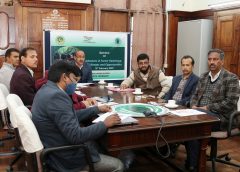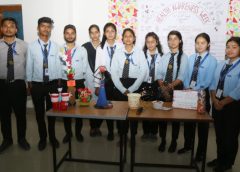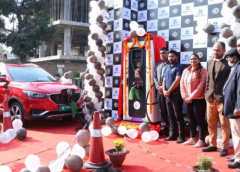Dehradun: Forest Ecology and Climate Change Division, FRI organized a one-day webinar on “Advances in Forest Hydrology: Challenges and Opportunities” on 18 th February 2022. The purpose of this webinar was to discuss and develop an understanding of the issues related to forest hydrology and to developed future strategies of research work in the discipline of forest hydrology. The webinar was attended by scientists, technical staff, and students of different ICFRE institutes, FRIDU. The webinar started with a welcome address by Dr. V. P. Panwar, Head, FE&CC division. The Director, FRI and DG, ICFRE, Sh. Arun Singh Rawat, in his inaugural address, expressed his concern about the rising water pollution.
He insisted that there should be a collaboration with other organizations and all should remain updated regarding the recent happenings and research in these fields. He extends that, there is a lot of pressure on water resources due to the burgeoning population and because of this majority are forced to drink packaged water in India. So, this is high time to work on water resources and other organizations should also come up for synergistic efforts. Work done in the past and present is on a watershed basis, which was like a pilot study so, elaborated/detailed studies are required. The technical session started with the presentation on “Water budgeting and ecosystem
services in Forested watershed” by Dr. Arjamadutta Sarangi, Principal Scientist, Water Technology Centre, ICAR-Indian Agricultural Research Institute (IARI), New Delhi. He discussed different components of forest hydrology and how the water parameters affect the agriculture and irrigation system. He also explained different techniques for quantifying the suspended sediment load. Also discussed the methodology to get the actual evapotranspiration data from different techniques e.g., SEBA and m-SEBAL. He explained that the sediment loss in agriculture is 10 times more as compared to forested watersheds and also elaborated their study on Bael tree i.e., through fall – 70-75 %, Stem flow-3.-4% and infiltration 21-26%.
The next presentation was on “Advances in Monitoring of Forest Hydrological processes” by Dr. Sumit Sen, Associate Professor, IIT Roorkee. He discussed on hydrological functions of forests. He also explained the correlation between hydraulic conductivity, infiltration, and soil moisture in different slopes. He also elaborated findings on the erosion, sedimentation, and bedload in the different landscapes and gave elaborated use of instruments at different scales. Dr. Parmanand Kumar, Scientist-D, FRI Dehradun discussed hydrological studies undertaken by FRI and presented achievements of past and present studies. He elaborated the findings of the study on “Assessment of hydrological services imparted by forest of Kempty watershed (Mussoorie)”. The webinar was wrapped with discussion on future research directions in the area of forest hydrology and concluded with vote of thanks by Sh. N. Bala to all participants and guest.



